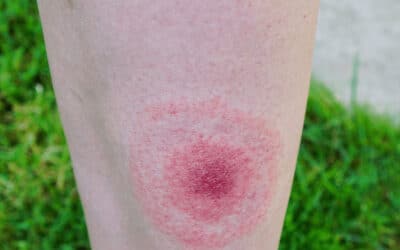Blog
Holistic Cancer Care: How Naturopathic Centers Support Healing
Conventional cancer treatments like chemotherapy and radiation are powerful but can leave patients feeling exhausted and vulnerable. Naturopathic cancer treatment centers offer a supportive and holistic approach, focusing on strengthening the body, improving quality...
How is Lyme Disease Contracted and is It Treatable?
Lyme disease is a serious disease carried by ticks. This infectious disease is incredibly common in the United States; every year around 300,000 people will be infected with Lyme disease. Dr. Clifford Fetters can help you treat this disease in the most natural way. He...
How Effective is Using IV Therapy as an Anti-Inflammatory?
Inflammation is the body’s response to tissue damage, and it can be caused by several things. However, there are now different ways you can treat inflammation. For example, IV vitamin infusions have been shown to help reduce inflammation in many people. Dr. Clifford...
Immune Support Therapy – An Emerging Immunotherapy
Cancer immunotherapy has come at the right time as much of the twentieth century's focus was on cancer immunosurveillance. For decades, cancer researchers have been interested in immunologic treatments against cancer but with little progress. The lack of effective...
The Leader in Lyme Disease Diagnosis and Treatment
Lyme disease is now the fastest growing infectious disease and most common vector borne illness in the United States. The CDC estimates that there will be 300,000 cases this year in the United States. This translates to approximately 6,000 cases in Indiana alone. The...
Three Signs You May Need Nutritional IV Therapy
What happens when you feel drained and need a pick-me-up? Most people turn to caffeine or energy drinks. However, these quick fixes can be ineffective if your body is in need of real nourishment. Nutritional IV (intravenous) therapy bypasses the digestive system to...
How Can the Far Infrared Heat Sauna Help With Inflammation?
Far infrared heat saunas are becoming increasingly popular for their many therapeutic benefits. Health and Wellness of Carmel can reinforce your natural immune response, improve circulation, relieve muscle and joint pain, and reduce inflammation. Dr. Clifford Fetters...
What are the Benefits of Far Infrared Heat Saunas?
The far infrared heat sauna can give you the benefits of sunshine without being exposed to dangerous and damaging ultraviolet rays. Infrared light is known to be the safest and “most beneficial” spectrum of natural sunlight, and spending just 30 minutes a day inside a...
What are the Dangers of Too Much Metal in the Body?
What you eat, where you live, what medicines you take – there are plenty of factors that can cause exposure to heavy metals. Unfortunately, while it’s often unavoidable, heavy metal can build up in the body and lead to unhealthy side effects. The good news is that...
Request an Appointment With Our Team of Experts
Question or Comment? Please fill out the contact form and one of our office team members will be back in touch within one business day. For immediate assistance, please call our office at (317) 663-7123. Thank you so much!


















